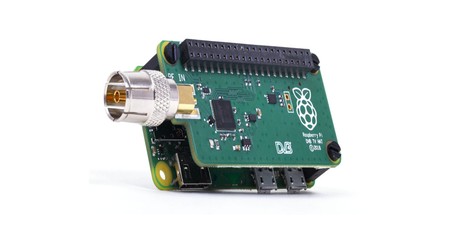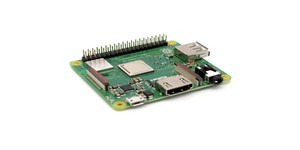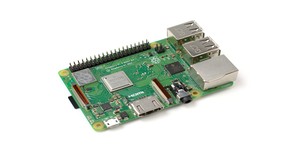Raspberry Pi gets compact uHAT add-ons, TV HAT accessory
October 18, 2018 | 10:18
Companies: #raspberry-pi-foundation

The not-for-profit Raspberry Pi Foundation has announced the launch of a new type of hardware attached on top (HAT) module for its eponymous single-board computer (SBC) family, the uHAT, with the first to use the half-size form factor being a digital video add-on.
The hardware attached on top (HAT) standard provides mechanical and electronic specifications for add-on boards designed to mate with the 40-pin general-purpose input/output (GPIO) header. As well as a PCB layout which is designed to maintain the same footprint as an unexpanded Raspberry Pi and which provides mounting points for support, the standard includes an electrically erasable programmable read-only memory (EEPROM) through which the operating system can identify and configure the add-on board.
The introduction of the Raspberry Pi Zero, an ultra-compact 'gumstick' variant of the Raspberry Pi, threw a small spanner in the works: While a HAT module takes up no more room than a full-size Raspberry Pi, it's considerably larger than a Raspberry Pi Zero. While third-party manufacturers have come up with their own solutions - the most popular being the unofficial pHAT boards created by Pimoroni - there's been no official change to the standard from the Foundation until now.
The uHAT standard, the Foundation has announced, is electrically identical to its full-size predecessor: There's a 40-pin female GPIO header to the top, and the EEPROM for autoconfiguration. The footprint, though, is designed to match that of the Raspberry Pi Zero family while retaining full compatibility with the main Raspberry Pi variants. There's also a missing mounting hole, at the bottom-left corner, to ensure that the uHAT boards don't foul the Display Serial Interface (DSI) connector when used with a larger Pi model.
As well as the board standard itself, the Foundation has announced the first official add-on to make use of it: The TV HAT, a uHAT-format add-on which provides DVB-T and DVB-T2 digital terrestrial television reception to any Raspberry Pi, for display locally or streaming across a network. Initially, the Foundation explains, the TV HAT will be a European exclusive owing to regulation regarding digital TV devices globally, though compliance work for expanding availability to other DVB-T2 regions is reportedly underway.
More information on the TV HAT is available on the Raspberry Pi website.

MSI MPG Velox 100R Chassis Review
October 14 2021 | 15:04








Want to comment? Please log in.